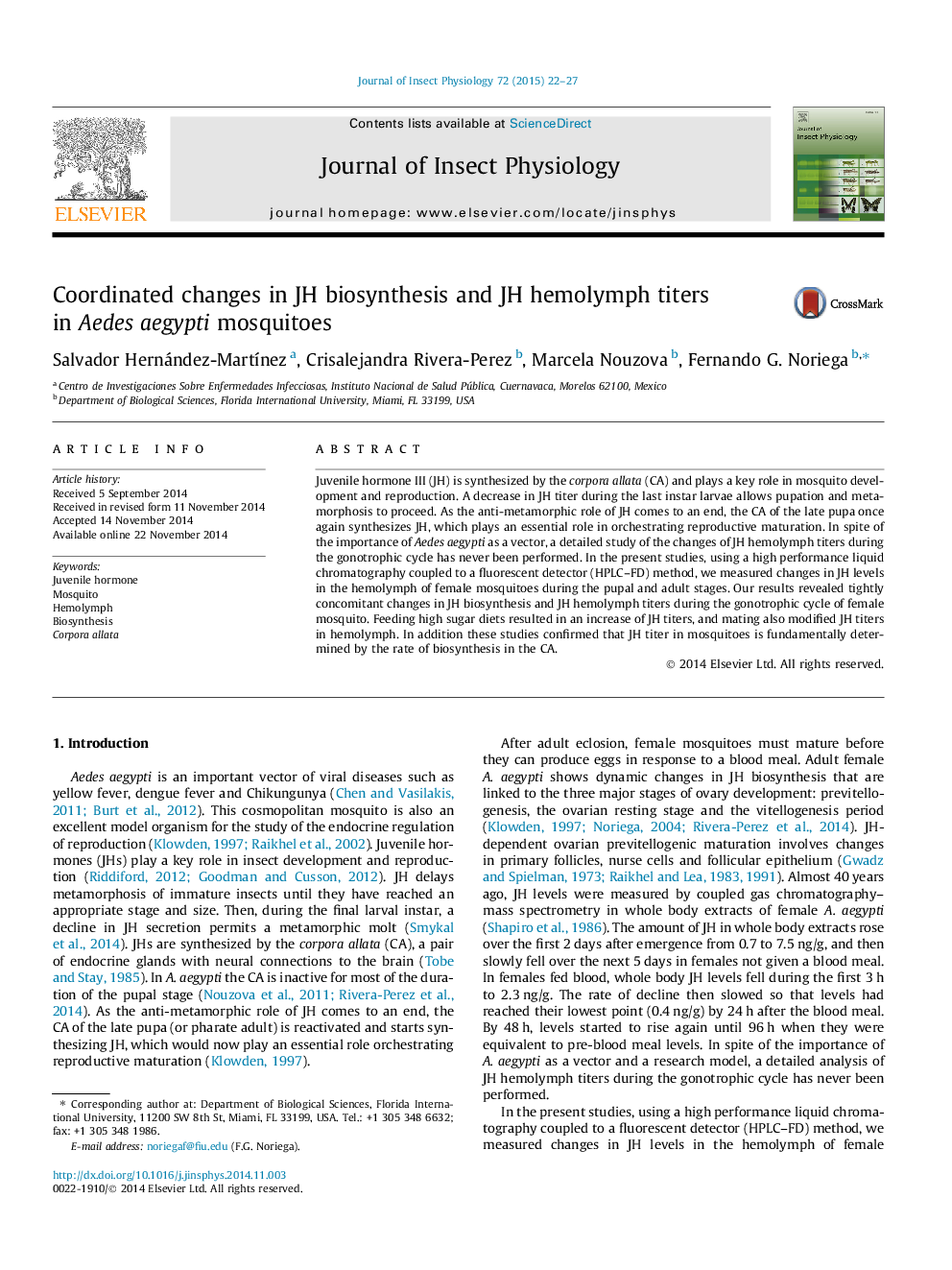| Article ID | Journal | Published Year | Pages | File Type |
|---|---|---|---|---|
| 2840371 | Journal of Insect Physiology | 2015 | 6 Pages |
•JH III levels were measured in the hemolymph of pupae and adult female mosquitoes.•There were coordinated changes in JH biosynthesis and JH hemolymph titers.•Feeding high sugar diets resulted in an increase of JH titers.•Mating also modified JH titers in hemolymph.•MF was detected in the hemolymph of larvae but not in adult female mosquito.
Juvenile hormone III (JH) is synthesized by the corpora allata (CA) and plays a key role in mosquito development and reproduction. A decrease in JH titer during the last instar larvae allows pupation and metamorphosis to proceed. As the anti-metamorphic role of JH comes to an end, the CA of the late pupa once again synthesizes JH, which plays an essential role in orchestrating reproductive maturation. In spite of the importance of Aedes aegypti as a vector, a detailed study of the changes of JH hemolymph titers during the gonotrophic cycle has never been performed. In the present studies, using a high performance liquid chromatography coupled to a fluorescent detector (HPLC–FD) method, we measured changes in JH levels in the hemolymph of female mosquitoes during the pupal and adult stages. Our results revealed tightly concomitant changes in JH biosynthesis and JH hemolymph titers during the gonotrophic cycle of female mosquito. Feeding high sugar diets resulted in an increase of JH titers, and mating also modified JH titers in hemolymph. In addition these studies confirmed that JH titer in mosquitoes is fundamentally determined by the rate of biosynthesis in the CA.
Graphical abstractFigure optionsDownload full-size imageDownload as PowerPoint slide
